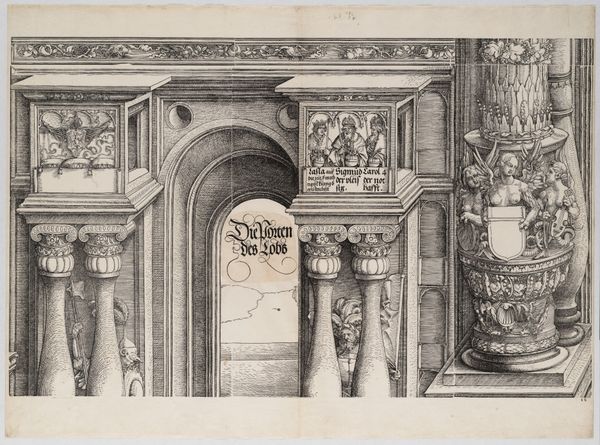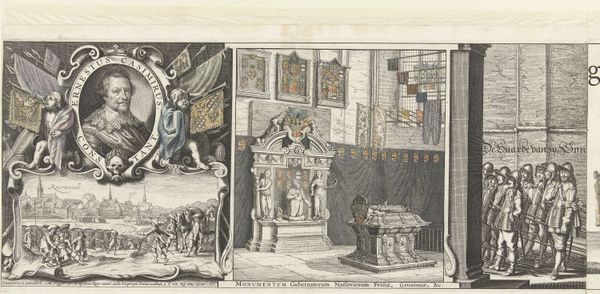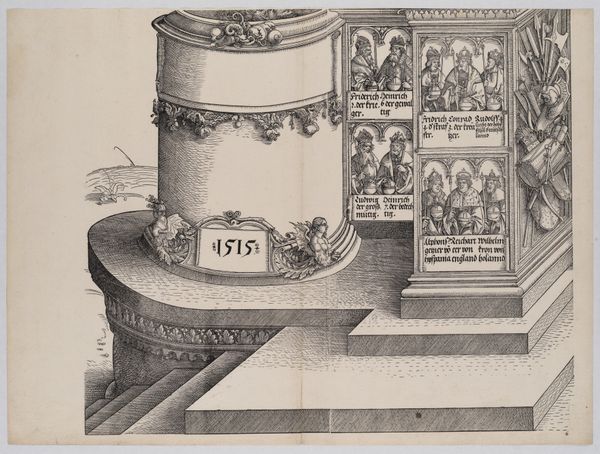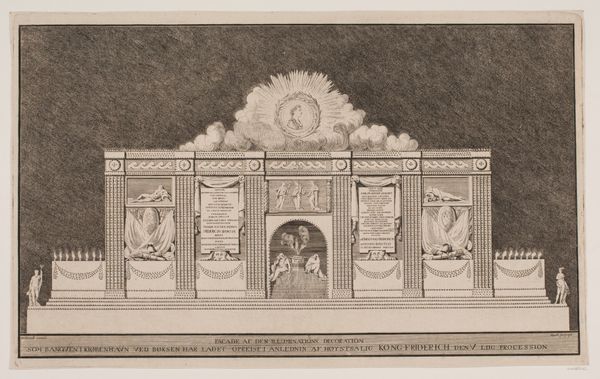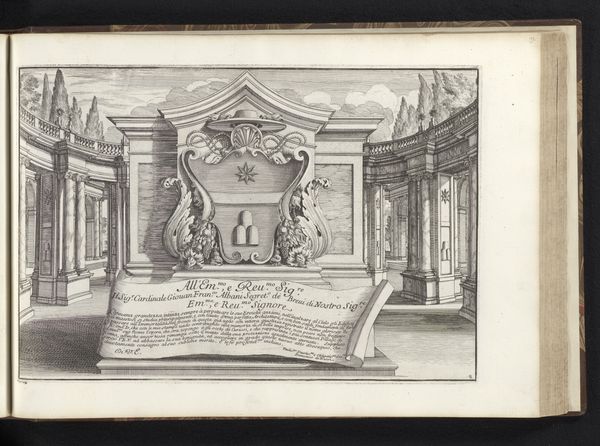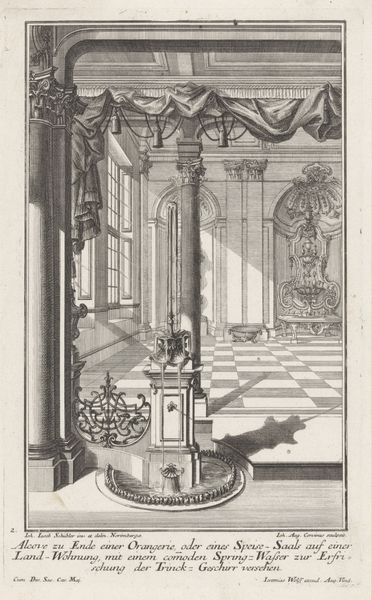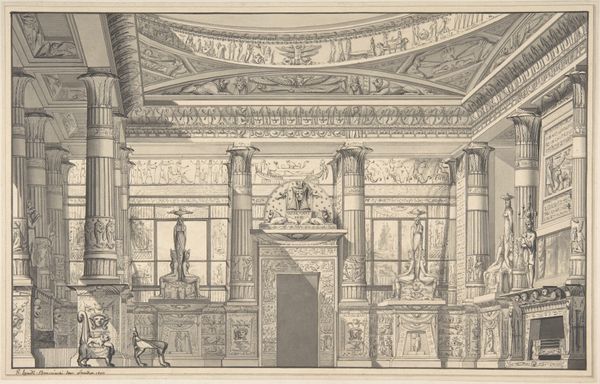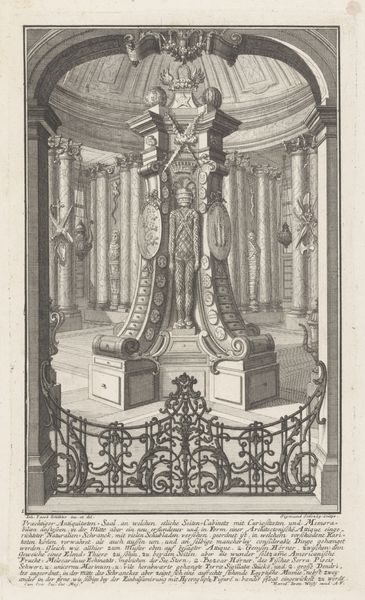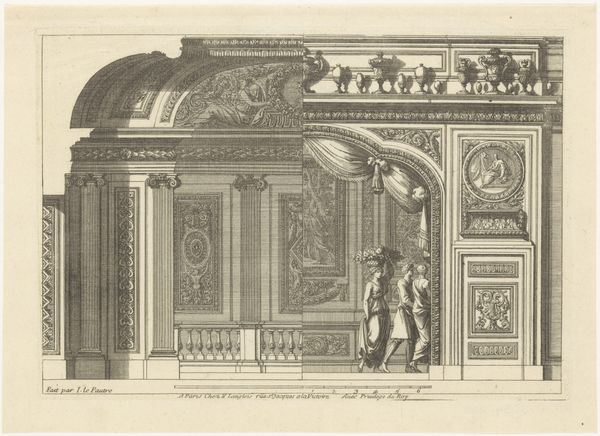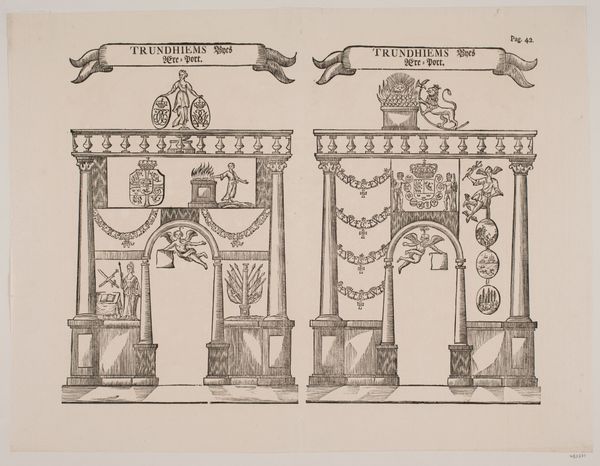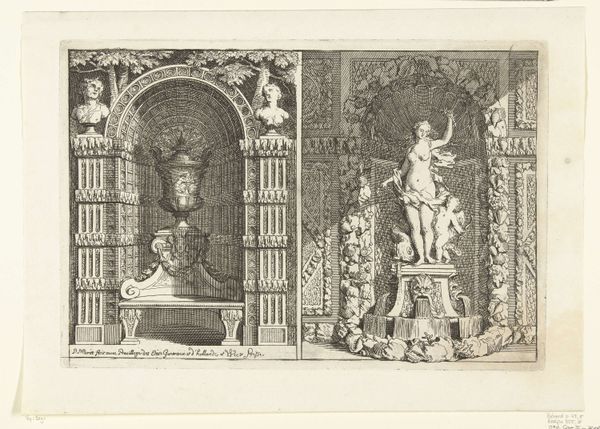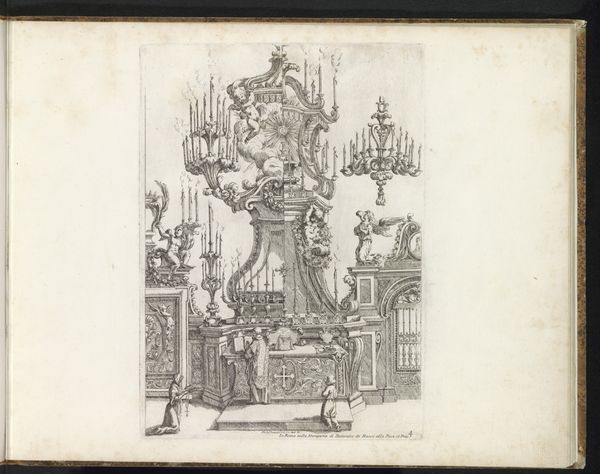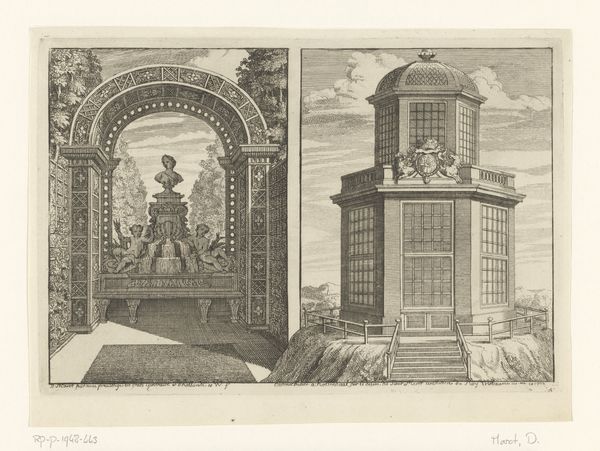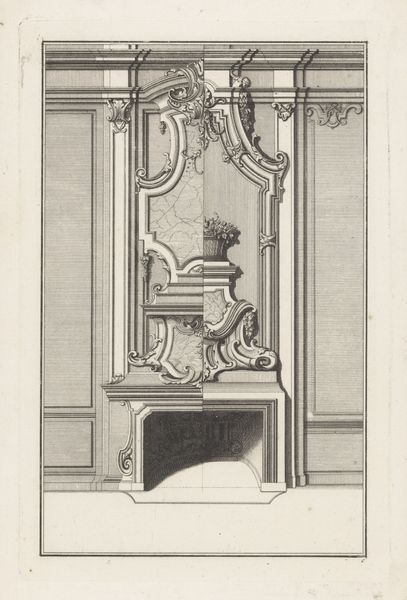
The Arch in the Entryway of the Right Portal (Die Porten des Adels); and the Outer Right Column of the Central Portal, from the Arch of Honor, proof, dated 1515, printed 1517-18 1515
0:00
0:00
Dimensions: Sheet: 18 7/16 × 25 1/16 in. (46.8 × 63.6 cm)
Copyright: Public Domain
Editor: This intricate engraving, "The Arch in the Entryway of the Right Portal..." by Albrecht Dürer, made around 1515, really strikes me with its sheer detail. I'm overwhelmed by all the ornamentation. What do you make of it? Curator: What grabs my attention are the materials and labor involved in producing this print. The "Arch of Honor" was a massive, propagandistic project commissioned by Emperor Maximilian I. This section, focusing on the architecture, speaks to the emperor’s ambition and self-aggrandizement through a display of manufactured imagery. Consider the sheer scale and repetition: this wasn't just about art, but about disseminating power. How does thinking about its production change your understanding? Editor: It’s incredible to think of this as early mass media! I suppose I hadn't really considered the workshop aspect and the skilled labor required to carve the blocks. The inscription blocks and imagery also now seem so pointed and strategic rather than just ornamental. Curator: Exactly! Dürer's workshop would have been a hub of intense, coordinated effort. The materiality of the wood, the precision of the tools, and the sheer volume of prints aimed to project imperial power far and wide. Do you see how this bridges the gap between “high art” and practical, social use? Editor: Yes, it reframes the whole thing. It makes you realize how Dürer was less like a solitary genius and more a central figure in a large-scale propaganda machine. Thinking about art as manufactured and circulated makes you wonder who was benefiting from this type of material investment and output. Curator: Precisely. This piece illuminates how art can be a tool, a commodity produced and circulated to shape perception and solidify power. Editor: That's given me so much to think about, not just about Dürer but also about the role of art in constructing authority and social hierarchies. Curator: It encourages a more critical, material understanding of art history. Seeing art through the lens of its creation reveals often-hidden social dynamics.
Comments
No comments
Be the first to comment and join the conversation on the ultimate creative platform.
